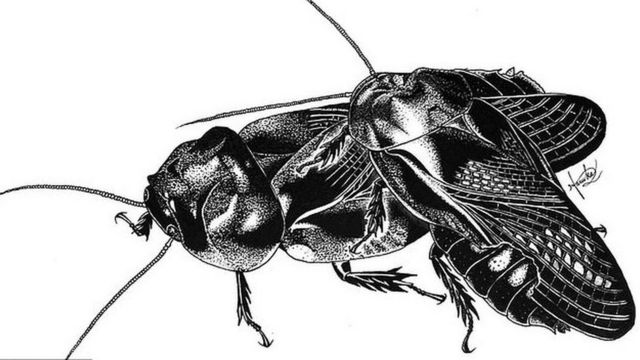The science news of the week: San Francisco Airport, the city’s heaviest building, has sunk 4 millimeters since its construction. Rising global sea levels have been a recurring theme in many thrillers in which giant waves engulf megacities. However, as geophysicist Tom Parsons of the US Geological Survey (USGS) has discovered, this is not the only reason for concern: It turns out that large cities are already “sinking” under their own weight. According to his calculations, San Francisco has sunk 80 millimeters into the ground over the course of its existence, and considering that the water level in the bay could rise 300 millimeters by 2050, this already raises serious concerns. “As a disproportionate share of the population moves to the coast, additional precipitation combined with sea-level rise increases the risk of flooding,” Parsons writes in his study, published in AGU Advances. If you take into account the weight of all the buildings in San Francisco and their contents, you get an astronomical figure of 1.6 trillion kilograms. This could easily be enough to bend the lithosphere upon which the metropolis rests and, more dangerously, to shift the tectonic plates, which could lead to fractures in the Earth’s crust. And this is considering that 80 millimeters of precipitation is the most conservative calculation, which does not take into account the weight of transportation and people outside buildings. In addition, depending on local geological conditions, other cities around the world may experience significant subsidence. Although the lithosphere tends to be thicker and stronger in the depths of continents, the research in the San Francisco Bay Area is likely applicable to all major cities, Parsons said.

We explain quickly, simply, and clearly what happened, why it matters, and what happens next. The number of offers should remain: episodes. End of story Podcast advertising
Yes, yes, we have all heard that video games make children and teenagers stupid, take them away from reality, brainwash them, and make them cruel. Even mass school shootings have been attributed to Internet shooters. But let’s still listen to the scientists. According to a recent study conducted by scientists at University College London, published by Cambridge University Press, boys who play video games regularly are almost 25% less likely to develop depression than their peers who are not interested in such games. The study involved more than 11,000 adolescents of both sexes at the age of 11. Scientists monitored their online gaming habits for three years and concluded that boys who played online at least once a week showed 24.2% fewer symptoms of depression. Interestingly, while video games themselves have not been linked to a worsening of mental health in 11-14 year olds, researchers have confirmed that Internet addiction in general can exacerbate symptoms of depression. In any case, according to a new publication from the University of Cambridge, it is not worth blaming video games alone for violence in the modern world, as the mainstream media often does. Although the public has scapegoated the creators of various video games and shooters for decades, blaming them for almost every major tragedy, video games actually do more good than harm. It’s just that people should take responsibility for their actions, and instead of demonizing video games, they should try to appreciate them for what they are.

In contrast to video games, energy drinks have developed a very good reputation: no wonder, they give you a boost of energy, increase your alertness and improve your mood. At least that’s what the advertisements say, and that’s what the manufacturers have achieved by stuffing caffeine, guarana, ginseng, and aspartame into cans. But as the authors of a new study have found, energy drinks may have an additional, long-term, and rather ominous effect. Although the link between the consumption of such drinks and mental disorders such as anxiety, depression and stress has been observed before, the long-term consequences have only been a matter of speculation. This time, the scientists developed a large questionnaire that was given to nearly 900 20-year-old volunteers, who were asked to answer a series of questions again after two years, including those about energy drink consumption and psychological well-being. By eliminating factors such as hereditary predisposition to mental disorders, dietary habits, drug and alcohol abuse, and smoking, scientists have concluded that there is a link between the consumption of energy drinks and increased levels of stress and, in young people, depression and feelings of anxiety. At the same time, researchers acknowledge that external and internal factors that are precursors to depression can make people feel weak and lead to increased consumption of energy drinks, which in turn can exacerbate the problem. Much, they say, depends on the specific ingredients in each drink. Scientists’ conclusion: Despite the widespread and virtually unregulated distribution of energy drinks in many countries, the harmful effects of their consumption are poorly understood and require further research.

Japanese forest cockroaches of the species Salganea taiwanensis are unique in that they form strong, lifelong family pairs. This is a great rarity in the animal world, let alone in the insect world, and even humans can learn something from them. However, as scientists who have observed the behavior of these cockroaches claim, their all-consuming love is indeed intertwined with cannibalism. The thing is, after an orgy of passion, the insects start gnawing each other’s wings, so that in a few days only stumps remain, which won’t take you far from your beloved (although these cockroaches fly well, but in their youth, before meeting their future spouse). Researchers observing 24 pairs of cockroaches in the forests of Japan found that the cockroaches would take turns eating each other’s wings, and the one being eaten would usually stand still and allow itself to be stripped. In half the cases, the wings were completely bitten off. In total, field studies have shown that over 99% of cockroach pairs have lost some or all of their wings as a result of such amorous biting. Sexual cannibalism is not uncommon in the insect world, but usually the female devours the male with his insides (how else?), and only rarely does the male do so. However, mutual consumption is only observed in Japanese forest cockroaches (at least, no other species has been seen doing this in the wild). Scientists point out that the ritual of mutual gnawing apparently causes no pain to the insects – otherwise they would resist. It is also unlikely that cockroaches vary their diet in this way, since their wings contain virtually no nutrients. But why all this? Researchers whose work is published in the journal Ethology suggest that there are significant benefits to such behavior! Cockroaches don’t need much: the family has been living in its rotten burrow for years, there is enough food, but space is limited. However, their wings do not hinder their maneuverability, and ticks do not breed under them. It’s also dangerous to venture outside – without wings, they won’t get far from predators. Such conflict-free mutual cannibalism ensures both survival, loyalty, and the continuation of the species.

